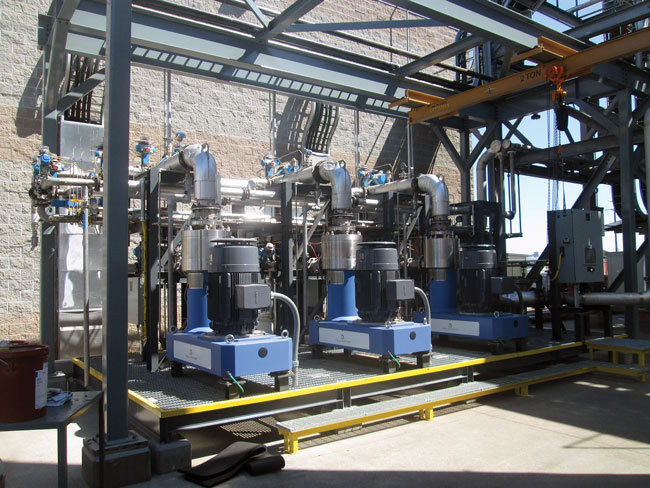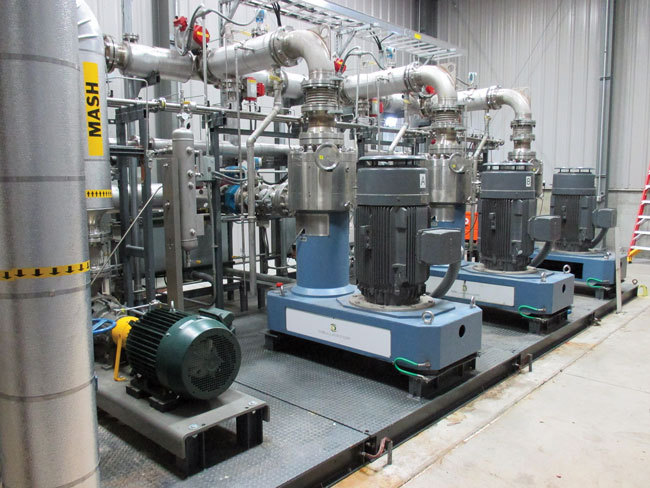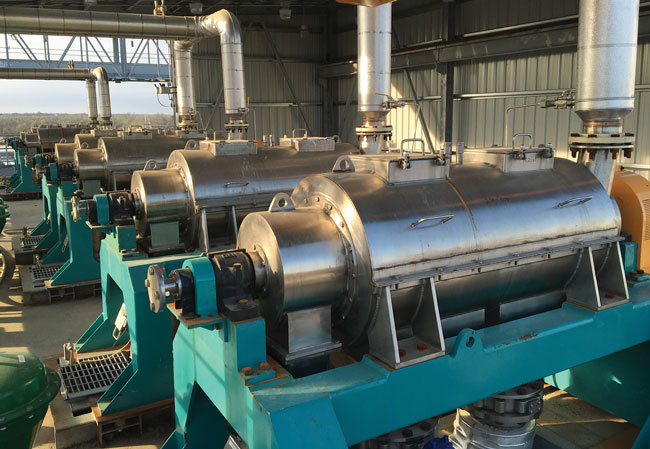Helping Ethanol Producers Get the Most Out of Their Product






May 20, 2016
BY Holly Jessen
In the ethanol production world, yield is king. Fluid Quip Process Technologies and Edeniq Inc. have technologies that can help producers convert more starch into ethanol. On top of that, the companies provide first-generation facilities a pathway to produce second-generation biofuels or biochemicals.
California-based Edeniq’s Cellunator increases first-generation ethanol yield and, paired with its Pathway Technology, allows corn ethanol production facilities to produce second-generation cellulosic ethanol from corn kernel fiber. Since late last year, when it was revealed Pacific Ethanol’s Stockton, California, plant had produced cellulosic ethanol utilizing Edeniq’s technology, multiple ethanol production facilities have announced licensing agreements.
Ohio-based FQPT has two yield-boosting technologies, Selective Grind Technology and Fiber By-Pass System. And, a new technology the company is rolling out commercially allows production of clean sugar for biochemical production, either in addition to existing ethanol production, as a complete retrofit or as a greenfield project.
The Shear Solution
Edeniq, founded in 2008, focused on developing a technology for low-cost conversion of biomass to cellulosic sugars. The company worked with IKA, a global company with expertise in high-shear equipment, to develop the Cellunator, a mechanical pretreatment process, says Peter Kilner, senior vice president of business development.
The company completed pilot and demonstration-scale performance testing of the technology at its headquarters in Visalia, California. The fully continuous biomass-to-ethanol pilot plant has the capacity to convert 2 dry tons per day and 50,000 gallons of ethanol per year and was built with the help of grants of $20.6 million from the U.S. DOE and $3.9 million from the California Energy Commission.
Along the way, researchers discovered the technology also worked to release more starch from corn and, with additional enzymes, produces cellulosic ethanol from corn kernel fiber. Although each facility is different, installing Cellunators alone is enough to increase corn ethanol production by about 4 percent, Kilner says. Once an ethanol plant takes the next step, to license Edeniq’s Pathway Technology, which harnesses cellulase enzymes, it can produce up to 2.5 percent cellulosic ethanol along with a 6 to 7 percent increase in overall ethanol yield. The equipment also increases corn oil production by about 20 to 30 percent, though the exact number varies.
Edeniq’s Cellunators first were installed in 2010 at E Energy Adams LLC, a 65 MMgy ethanol plant in Adams, Nebraska. Cellunators have a modular design and are installed at the rate of one per 20 MMgy capacity. Today, the company has 29 Cellunators installed at six ethanol production plants. The list is made up of Pacific Ethanol in Stockton, California; Mid American Agri Products-Wheatland LLC in Madrid, Nebraska, and three of the seven Flint Hills Resources ethanol plants.
In December, the Pacific Ethanol Stockton plant was the first to use Edeniq’s Pathway technology to produce cellulosic ethanol from corn kernel fiber. Pathway licensing agreements were announced by Flint Hills in February and Aemetis Inc. in March. These major announcements have garnered a lot of positive attention for the company. “There will be many more deals to follow very quickly,” Kilner says.
Of course, there are a number of competing technologies that capture more starch for ethanol production. However, Kilner is confident Edeniq’s is the best, citing low capital cost and a superb return on capital cost, with less than a one-year payback.
The technology has improved significantly over time in two key ways, Kilner says. First, Edeniq has doubled the life of the mechanical heads that grind and shear corn fiber, reducing replacement costs. The company took another big step forward in the past year, when it commercialized the Pathway Technology, with a cocktail of enzymes that allows for cost-effective conversion of cellulosic ethanol from fiber. The enzymes are sourced from a major enzyme producer, which Edeniq has not disclosed, Kilner says.
Reaching this milestone has been a game change for the company. Pathway Technology now can bring cellulosic ethanol production to existing first-generation ethanol plants. “That’s something that has been a hope and dream for years and we’re doing it now,” he says.
The goal is to continue to quickly roll out the technology. Edeniq is aiming for a 20 percent market penetration, or installation at plants with a total capacity of 3 billion gallons. That would add up to about 75 MMgy cellulosic ethanol production, Kilner says.
Aemetis, Flint Hills and Pacific Ethanol have announced licensing agreements with Edeniq. Those three companies together produce well over 1 billion gallons of first-generation ethanol combined, bringing Edeniq more than one-third of the way to its goal. Additional licensing agreements are expected once the U.S. EPA has approved Pacific Ethanol’s registration for D3 RINs [renewable identification numbers] for cellulosic ethanol production. That application was in to the EPA at the end of January. “We are told it should be a couple months, so we are expecting a response shortly,” Kilner says.
Edeniq also assists Pathway customers through the D3 RIN registration process, says Cam Cast, vice president of engineering, operations and sales. The company’s proprietary analytical methods quantify the amount of ethanol produced from starch and fiber conversion.
And, although a big focus is on cellulosic ethanol production at corn ethanol plants, Edeniq has not given up on biomass. The company’s second business model, producing low-cost cellulosic sugars, has an expected initial market in the ethanol industry, with opportunities for other biofuels, biochemicals or biobased products down the road.
In fact, the company currently is partnering with Usina Vale to build a biomass-to-cellulosic ethanol demo plant in Brazil, colocated at Usina Vale’s ethanol and sugar production plant. The hope is that the facility will be completed this year and operational in 2017, Kilner says, qualifying that by noting how slowly things move in Brazil. Initially, the plant will process sugarcane bagasse, however, the process also has been developed to convert corn stover, he says.
It’s All About Grind
FQPT works with sister company Fluid Quip, a designer and manufacturer of custom separation and milling solutions for the wet milling and pulp-and-paper industries, to develop and modify equipment for the dry-grind ethanol industry. FQPT’s Wet Fractionation System for dry-grind ethanol plants includes multiple technologies, including selective grind, front-end corn oil separation, fiber separation and back-end protein recovery that can be implemented together or separately, says Michael Franko, vice president of business development.
SGT, a trademarked technology patented in 2015, offers ethanol producers a secondary separation milling step in slurry or liquefaction, releasing more starch for ethanol production. “It’s specifically designed to break starch away from fiber but not create fine fiber,” says Neal Jakel, vice president of strategy and technology for FQPT, adding that fine fiber can cause challenges at the back end of the plant.
The first SGT system started up at an ethanol plant in 2010 and a total of 11 systems are in operation today, Franko says. However, thanks to a licensing agreement with ICM Inc., total market penetration is even greater. By the end of April, ICM had 24 trademarked Selective Milling Technology systems in operation, according to ICM. While FQPT’s SGT and ICM’s SMT do have slight differences, Franko says, the two companies have a good relationship and collaborate and cooperate on improvements to the technology.
“We see it as the best technology for the marketplace,” he says. “The more plants that have it, the better.”
The technology can help low-yielding facilities jump ethanol production by as much as 4 percent plus, while producers already at the top can see yield increases of up to 1.8 percent. “The bottom line is we do always see a yield boost,” Jakel says. “It just depends on where they are at in terms relative to that theoretical maximum yield range.” In addition, SGT ramps up corn oil yield an average of 18 percent.
Customization is a key feature of FQPT’s grind system. For example, producers can target specific ethanol and corn oil yields. “We have four different mill sizes and types in operation, with a focus on really fitting the objectives of the plant,” Franko says.
The technology has improved over time with continued research and development. One significant example is the mill’s automatic gap adjustor, Franko says, which opens or closes the grinding gap as flow rates change during plant operational changes or as the plates wear. FQPT also worked to develop low-cost plates for the mill, which generally need replacement every three to six months. Unlike other technologies, which have much higher costs for replacement parts, SGT’s low-cost plates encourage producers to replace them regularly to keep the system fully optimized. “I liken it to the tires on your car,” Franko says. “If you are going to drive around and let your tires get bald, you’re not getting the full benefit.”
The company’s Fiber-By-Pass technology (also licensed to ICM) removes corn kernel fiber at the front end. Fiber makes up roughly 10 percent of nonfermentable material and separating it prefermentation frees up fermentor capacity, Jakel says. Three ethanol plants have FQPT’s fiber separation system installed. Once fiber is separated, it generally is combined with the stillage at the back end, ultimately ending up in the distillers grains, Franko says. However, it could also be a feedstock for cellulosic ethanol.
Next up is FQPT’s Clean Sugar Technology, which allows for production of a clean sugar stream for biochemical production. It’s similar to sugars produced at a wet mill but for half or less CapEx and one-third the operating expense. “That’s a big, big price difference for what we can produce that C6 molecule for,” Jakel says.
A retrofit project at a former ethanol plant was under way in April with startup of biochemical production expected in a few months, Franko says, adding that FQPT is in talks with other interested parties. “For us, it’s that next big thing,” he says. “We feel like it’s going to have a significant adoption rate into the industry.”
Plenty also is happening with the company’s other equipment offerings. In April, a full Wet Fractionation System was in the commissioning phase at a sugarcane and corn ethanol plant in Brazil. Meanwhile, a Maximized Stillage Co-Products Protein Recovery System, the third instillation of this technology, is expected to begin operations at United Wisconsin Grain Producers this summer. Several other companies are considering implementing it. “We look at it as the next corn oil,” Jakel says.
But that’s not all of the innovations FQPT, which has 10 engineers on staff, is considering. “We are continuing to develop new technologies, new solutions and ongoing improvements for the biochem and biofuels industry,” Jakel says.
Author: Holly Jessen
Freelance writer
hollyjessenmedia@gmail.com
Advertisement
Advertisement
Advertisement
Advertisement
Related Stories
The U.S. Energy Information Administration maintained its forecast for 2025 and 2026 biodiesel, renewable diesel and sustainable aviation fuel (SAF) production in its latest Short-Term Energy Outlook, released July 8.
XCF Global Inc. on July 10 shared its strategic plan to invest close to $1 billion in developing a network of SAF production facilities, expanding its U.S. footprint, and advancing its international growth strategy.
U.S. fuel ethanol capacity fell slightly in April, while biodiesel and renewable diesel capacity held steady, according to data released by the U.S. EIA on June 30. Feedstock consumption was down when compared to the previous month.
XCF Global Inc. on July 8 provided a production update on its flagship New Rise Reno facility, underscoring that the plant has successfully produced SAF, renewable diesel, and renewable naphtha during its initial ramp-up.
The USDA’s Risk Management Agency is implementing multiple changes to the Camelina pilot insurance program for the 2026 and succeeding crop years. The changes will expand coverage options and provide greater flexibility for producers.
Upcoming Events










